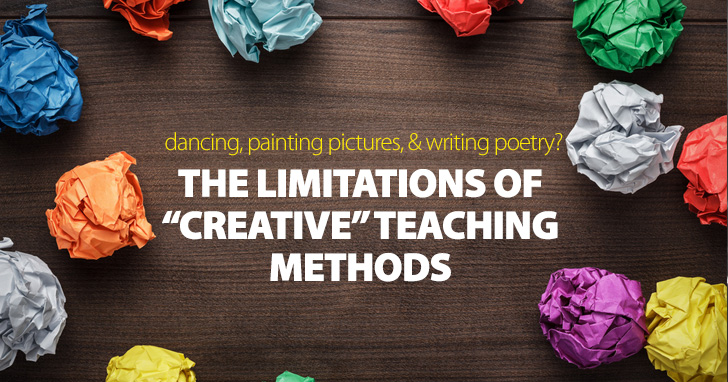Teaching ESL in an Individual Tutoring Setting: Keeping the Student Awake and Involved


I just attended an “accelerated learning” workshop at the northern California community college where I teach. (“Acceleration” is a current buzzword in U.S. higher education, as we try to think of ways to push students through the learning process in some fast and easy way in the face of record cuts to education funding.) I’m not complaining about the conference itself. It was a nice half-day to chat with colleagues. We were given lunch and a stipend for attending. We discussed a lot of creative teaching methods and strategies for a comfortable learning environment: low light, music, ergonomically designed desks, opportunities to get up and move around, etc.
And even during the conference I strained and ultimately failed to make a connection between the strategies discussed, which seemed to be focused on student comfort levels, to accelerated learning—or learning at all. (My husband commented, when I was discussing the conference with him, that low light, soft music, and comfortable seating were more likely to put him to sleep than anything.) Much of the research and understanding of learning in general show that in fact comfort might be antithetical to learning. When we are comfortable with where we are, we have little incentive to change, grow, or learn. Creative or alternate teaching strategies may have less to do with learning itself than with building a comfortable, safe atmosphere conducive to learning, a first step to be sure, but not going much beyond it.The speaker was charismatic and personable. However, the reason I included “etc.” at the end of the list of strategies is that a day after the conference, in the absence of the charming speaker and the excitement generated in the room, I just don’t remember much of what we discussed.
In a discussion on creative teaching methodology, a few factors have to be considered: defining what exactly is meant by creative teaching, reasons to incorporate this methodology in the class room, and the limitations of such strategies.

“Creative teaching” seems to be a somewhat umbrella term, meaning loosely anything that isn’t the traditional in which the teacher lectures and the students take notes, do homework, come with questions and comments to discuss, and so forth. It often means a more student-centered class with less focus on the teacher and more peer interaction. Often also it includes incorporating activities from other disciplines that include actual creative activities such as drawing pictures, writing poetry, dancing, and so forth. There are several reasons to include such activities in the regular curriculum.

A major reason for including creative teaching methods is that they do present a break from the regular curriculum. If students have spent days or even weeks learning the passive voice, it can be a nice break to learn the song “She Will be Loved,” which incorporates the future passive in its chorus.
Along with there being the break from the regular curriculum, there is heightened student interest in novel teaching methods. Instead of learning vocabulary through more traditional methods of incorporating new words in writing a journal, for example, why not learn everyday vocabulary through watching an episode of a TV comedy series?
Creative teaching methods by their very nature also incorporate methods and materials across the curriculum. Students are also learning something about literature and art by writing poetry or critiquing a painting with new vocabulary.

Although there are reasons to include creative teaching methods in the curriculum, there are also corresponding reasons to limit them that follow.
A major concern with creative teaching is that, by its very nature of including focus away from traditional instruction, it takes time away from the regular curriculum as well. It is fine to include the occasional song in ESL curriculum, for example. Last semester, being an unabashed Maroon 5 fan, I taught my ESL class the group’s “She Will Be Loved” because of its relatively simple lyrics and haunting melody. More to the point, it was the first day of class, the students didn’t have their books yet, and I had the CD in my office. Then students got their books, and we focused on the regular course curriculum. As it wasn’t a music class, we didn’t sing every day.
Another concern with creative teaching is students simply may not share the teacher’s enthusiasm for singing, writing poetry, or drawing pictures. If they signed up for an English class, it is unfair to pull “bait and switch” and expect them to spend the course session painting.
Related to the concern of student apathy is student ability, or lack thereof. Not all students are going to be good at the fun art project. Some students frankly hate games like relay races and may have physical limitations that preclude participation. Not all students are talented poets or dancers. Again, the students did not come to class to learn those skills, so very limited time should be spent on them.
A final reason to limit creative teaching methods is that they tend to increase “off-task” behavior: that is, attention that is not focused on what students are supposed to be studying. Because the creative material is in itself somewhat off-task and perhaps only tangentially related to the main curriculum, truly off-task behavior is just an exacerbation. It really isn’t a big leap for students to go from singing Maroon 5 to chatting about the weekend party when they are done with the song (or not).
Creative teaching strategies are in and of themselves fine, and they do have advantages, such as increased peer interaction and making connections across the curriculum. However, there are more disadvantages than advantages, also, in terms of lack of focus on the core course curriculum and increased off-task behavior. Therefore, while creative teaching might be a starting point, ultimately, the class session and course as a whole has to be pulled firmly back to its true objectives.